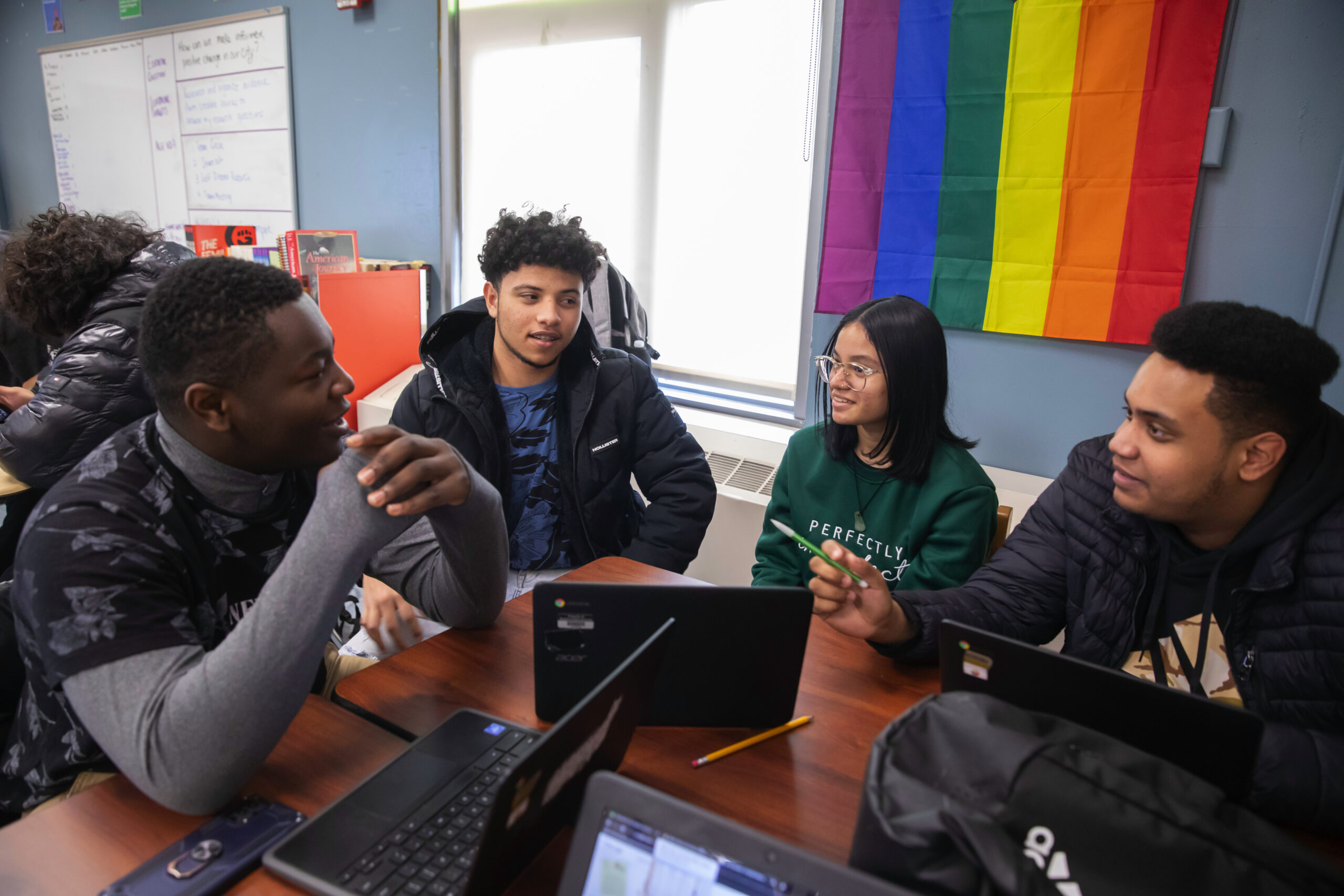For the past three years, the nine New England communities in the “Portrait of a Graduate” cohort have been taking steps to do high school differently to support more equitable outcomes and success for all students. They started by exploring the question, “What do we want all of our students to know and be able to do when they graduate?” Many conversations with students, families, teachers, local businesses, and other community members resulted in a collective vision for student success, also known as a portrait of a graduate. At its core, a portrait of a graduate is intended to serve as a north star for equitably serving all students and ensuring that when they leave high school, they are prepared for what’s next.
At Barr, we believe that building a community vision is an important step to anchor school transformation work. This vision should be centered on students, driven by local context, and informed by research. We support many Catalyze New Models grantees in developing and implementing a portrait of a graduate, including this specific Portrait of a Graduate cohort.
The current Portrait of a Graduate cohort partners include six school districts, two individual high schools, and a regional collaborative comprising multiple districts and a public charter school.
- Berkshires Collaborative (MA): Pittsfield High School, Taconic High School, Drury High School, BART Charter School, and Hoosac Valley Middle & High School
- Boston Preparatory Charter Public School (MA)
- Danbury Public Schools (CT)
- Franklin Public Schools (NH)
- Lowell Public Schools (MA)
- Margarita Muñiz Academy (MA)
- Meriden Public Schools (CT)
- Springfield Public Schools (MA)
- Stratford Public Schools (CT)
After developing their portraits of a graduate, teams of district and school administrators, teachers, families, students, and community members began laying the groundwork to bring their portraits to life.
Common areas of work completed over the 2021-22 school year included:
- Deepening their understanding of how their high schools currently did and did not align to the portrait of a graduate competencies, so that proposed solutions and changes would address the root causes of any key gaps;
- Building momentum and deepening engagement of stakeholders around the need for change; and
- Re-envisioning the student experience, including rethinking instructional practices and ways of measuring student learning.
